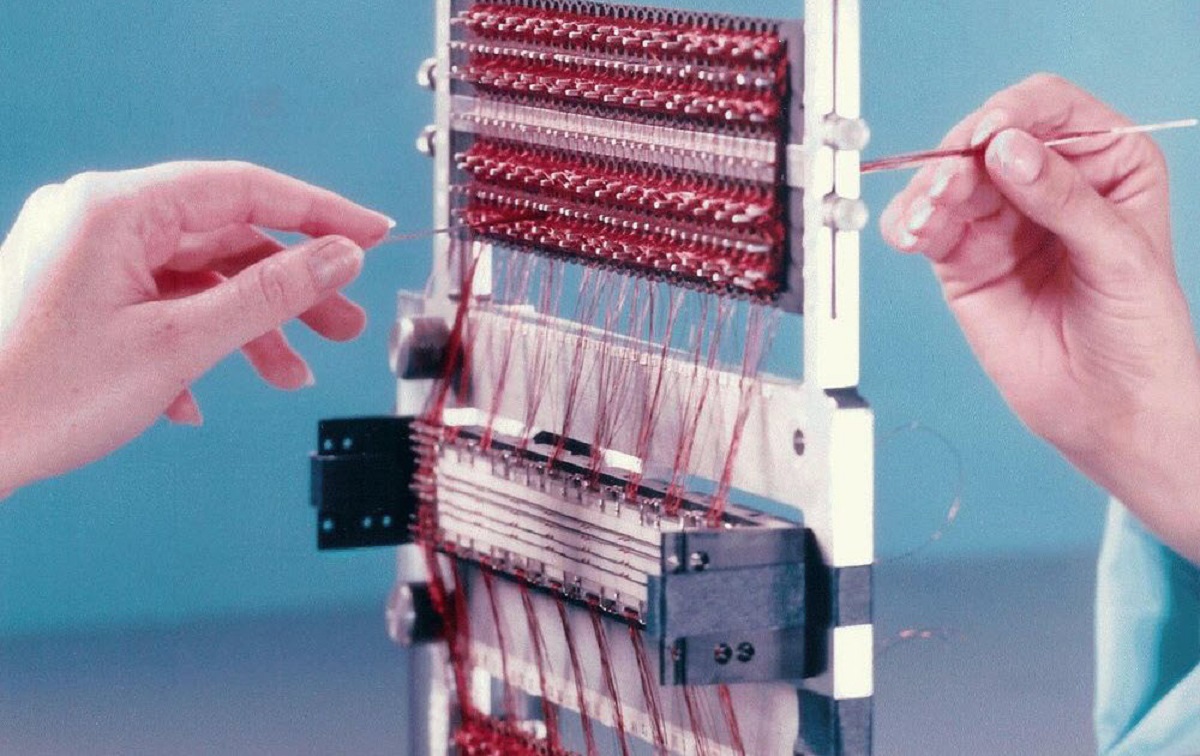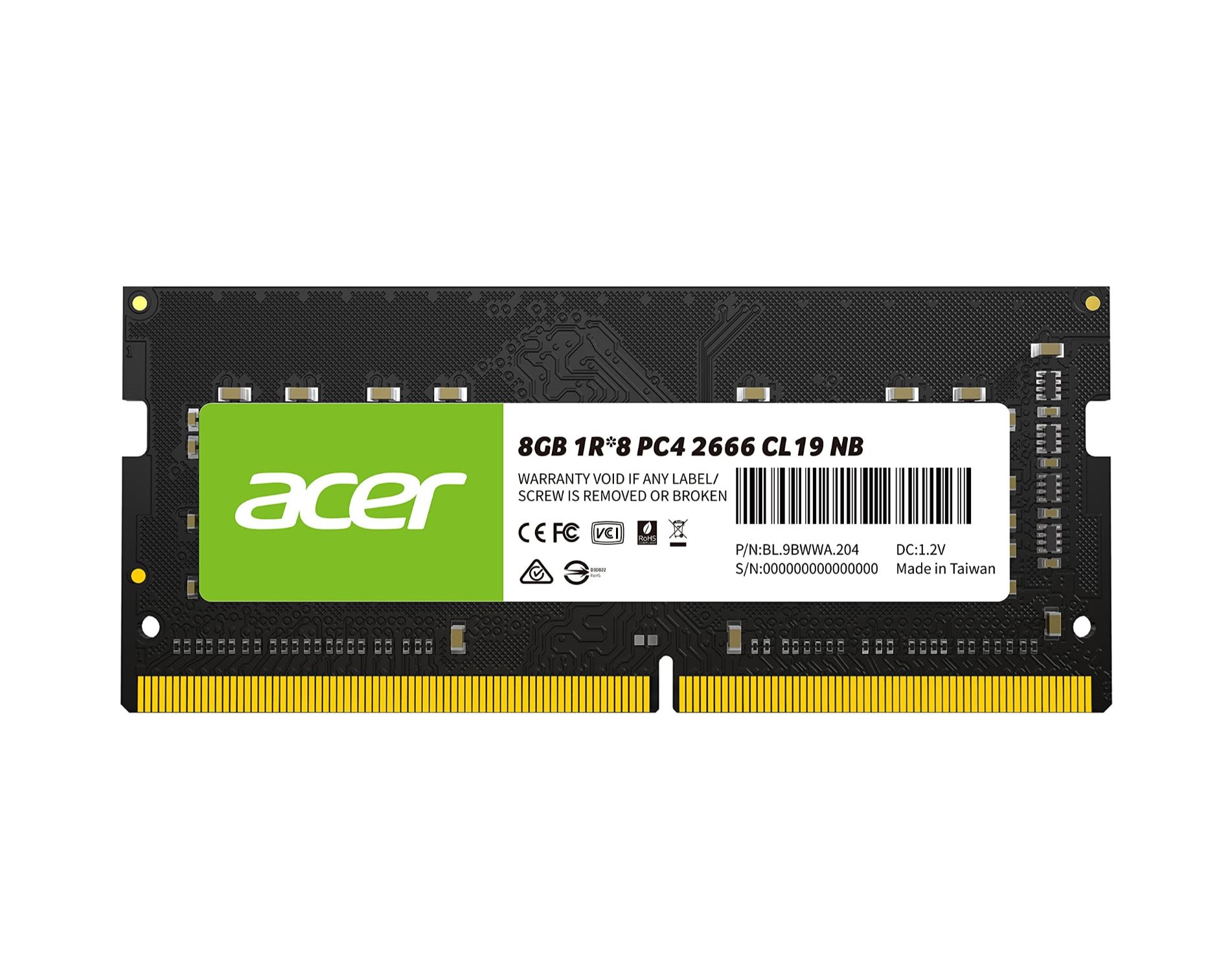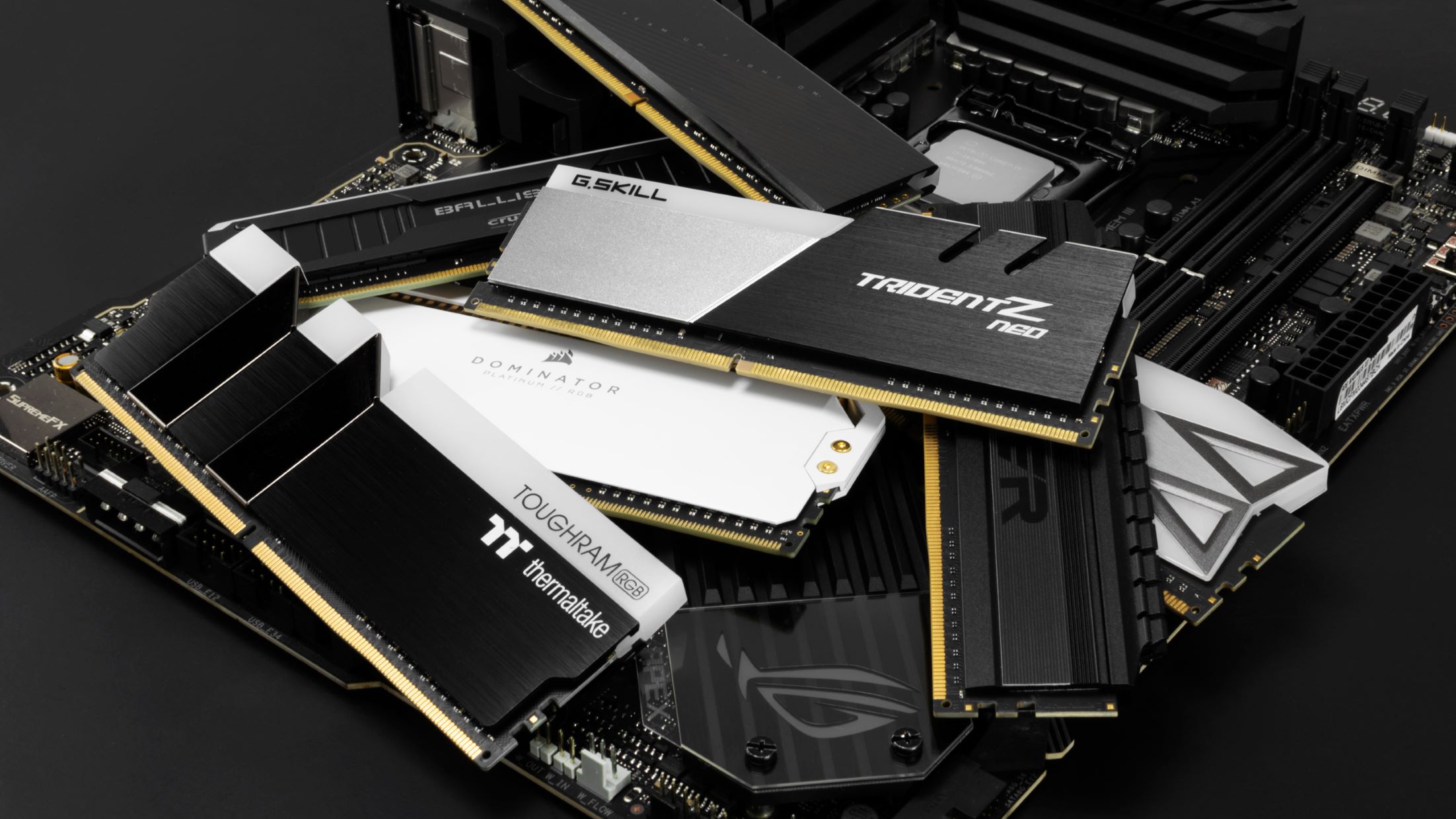Introduction
Welcome to the fascinating world of the Apollo 11 mission, one of humanity’s greatest achievements. When Apollo 11 successfully landed on the moon on July 20, 1969, it marked a monumental leap forward in space exploration. Behind this historic feat was not only the bravery of the astronauts but also the cutting-edge technology of the time. One crucial component of this technology was the Apollo Guidance Computer (AGC), a marvel of engineering that played a pivotal role in navigating the spacecraft.
The AGC was a state-of-the-art computer system specifically designed for the Apollo missions. It provided precise guidance and calculations needed to navigate and control the spacecraft. One vital aspect of its design was the amount of memory it possessed, particularly Random Access Memory (RAM). RAM is an essential part of any computer system, allowing data to be quickly accessed and modified during runtime.
In this article, we will explore the significance of RAM in the context of the Apollo 11 mission. We will delve into the specifics of the AGC’s memory and understand its role in the success of this historic lunar landing. So, let’s journey back in time and discover just how much RAM the Apollo 11 had and why it was so important.
The Apollo Guidance Computer
Before we dive into the details of the RAM on Apollo 11, let’s take a moment to appreciate the remarkable Apollo Guidance Computer (AGC) itself. Developed by the Massachusetts Institute of Technology’s Instrumentation Laboratory, the AGC was a groundbreaking technology for its time.
The AGC was a compact and lightweight computer designed to fit inside the limited space available on the Apollo spacecraft. It was responsible for multiple critical tasks, including navigation, guidance, and control. The AGC operated using a combination of hardware and software, making it one of the earliest examples of a truly digital computer.
The AGC was an innovative system, designed to withstand the harsh conditions of space travel. It used integrated circuits, which were a relatively new technology at the time. These circuits allowed for more compact and reliable electronic components, crucial for the success of the mission.
The AGC’s compact size and power-efficient design were also noteworthy. It consumed only 55 watts of power, which was an impressive feat considering the computing capabilities it possessed. This energy efficiency was vital for prolonged space missions, where power sources were limited.
Now that we have a better understanding of the remarkable AGC, let’s explore the memory components that were integral to its operation, particularly the RAM.
Memory on the Apollo Guidance Computer
Memory is a crucial element in any computing system, and the Apollo Guidance Computer (AGC) was no exception. The AGC had two primary types of memory: Random Access Memory (RAM) and Read-Only Memory (ROM).
RAM, as the name suggests, allowed the AGC to store and access data randomly. It provided fast and temporary storage for the computer’s operations. ROM, on the other hand, contained instructions and data that were permanently programmed and could not be modified during runtime.
The AGC used a fascinating type of RAM known as core memory. Core memory was a magnetic storage technology that used tiny magnetic cores to store data. These cores were threaded with wires, forming a grid-like structure. By manipulating the magnetic fields within these cores, the AGC could write and read data.
Core memory had several advantages for the AGC. Firstly, it was a non-volatile form of memory, meaning it retained data even when power was lost. This was crucial in space missions to avoid data loss during power fluctuations. Additionally, core memory was highly reliable and resistant to radiation, making it ideal for the tumultuous space environment.
However, core memory had its limitations as well. It was relatively slower compared to modern memory technologies, and its capacity was limited. To overcome these limitations, the AGC used a sophisticated memory management system that efficiently utilized the available memory.
The AGC’s ROM, on the other hand, contained preloaded software, including the operating system and the guidance and navigation programs. This memory was read-only, meaning the computer could only fetch instructions from it, but not modify the contents.
Having covered the basics of the AGC’s memory system, let’s now dive into the specifics of the RAM on board the Apollo 11 mission.
RAM vs ROM
In the world of computer memory, Random Access Memory (RAM) and Read-Only Memory (ROM) serve distinct purposes and have different characteristics.
RAM, as mentioned earlier, is a type of memory that allows for quick and random access of data. It is volatile, meaning that its contents are lost when the computer is powered off. RAM is crucial for storing data and instructions that are actively being used by the computer’s processor. In the case of the Apollo Guidance Computer (AGC), RAM played a vital role in providing temporary storage for calculations and data manipulation during the mission.
On the other hand, ROM is a non-volatile memory that contains preprogrammed instructions and data. It is read-only, meaning that the computer can only fetch data from it, but not modify its contents. ROM is typically used to store permanent data and essential software, such as the AGC’s operating system and guidance programs. This ensures that critical instructions are always available and cannot be accidentally modified.
The main difference between RAM and ROM lies in their purpose and functionality. RAM allows for fast read and write operations, making it ideal for dynamic data storage. It provides the flexibility required for changing data during runtime. ROM, on the other hand, is designed for storing permanent data and instructions that do not need to be altered during normal operation.
In terms of physical characteristics, RAM and ROM also differ. RAM is typically implemented using semiconductor-based technologies, such as magnetic core memory, as was the case with the AGC. ROM, on the other hand, can be implemented using various technologies, including programmable read-only memory (PROM), erasable programmable read-only memory (EPROM), and electrically erasable programmable read-only memory (EEPROM).
In summary, RAM and ROM are two integral types of memory that serve distinct purposes. RAM provides temporary storage for data and instructions actively used by the computer, while ROM contains permanent instructions and data that cannot be modified. Both types of memory played crucial roles in the operation of the Apollo Guidance Computer.
RAM on Apollo 11
Now let’s explore the details of the Random Access Memory (RAM) on board the Apollo 11 mission. The AGC featured a total of 2,048 words of RAM, with each word consisting of 14 bits. This may seem minuscule by today’s standards, but it was an impressive feat for the time.
The RAM on Apollo 11 was implemented using a core memory technology, specifically a type known as “rope memory.” Rope memory, also known as woven memory, utilized a series of thin wires, often made of copper, woven through tiny magnetic cores. The presence or absence of a wire passing through a core represented a binary 1 or 0, respectively.
Rope memory was reliable, physically robust, and unaffected by radiation, making it well-suited for the demanding conditions of space travel. It provided a non-volatile form of storage, meaning that it retained its contents even when power was lost, a critical characteristic in the volatile environment of space.
The 2,048-word capacity of the AGC’s RAM may seem limited, but it was carefully managed to accommodate the various functions and programs required for the mission. The software developed for Apollo 11 was meticulously designed to make the most of the available memory, ensuring optimal performance and data storage.
The limited RAM capacity required the AGC to employ a practice known as “bank-switching.” Bank-switching allowed the computer to access additional blocks of memory beyond the initial 2,048 words. By swapping between different memory banks, the AGC could effectively increase its storage capacity.
It is noteworthy that while the AGC’s RAM was limited, it was still able to handle the crucial tasks of navigation, guidance, and control during the Apollo 11 mission. This is a testament to the impressive programming, optimization, and efficiency of the software developed for the AGC.
Now that we’ve explored the RAM on Apollo 11, let’s delve into the overall memory capacity of the AGC, as well as its usage during the historic mission.
The AGC’s Memory Capacity
The Apollo Guidance Computer (AGC) had a total memory capacity of 36,864 words, consisting of both Read-Only Memory (ROM) and Random Access Memory (RAM). This may seem modest compared to the memory capacities of modern computers, but it was impressive for the time and the constraints of space travel.
The AGC’s ROM, also referred to as fixed memory, accounted for a significant portion of its total memory capacity. It had 36,048 words of fixed memory, which stored the essential software and instructions that were permanently programmed into the computer. This included the operating system, guidance programs, and other critical functions necessary for the mission.
The remaining portion of the AGC’s memory was allocated to RAM. As mentioned earlier, the AGC had 2,048 words of core memory, which provided temporary storage for calculations and data manipulation during the mission. Although the RAM capacity may seem small by today’s standards, it was carefully utilized and optimized to ensure efficient operation of the AGC.
It’s important to note that the AGC’s memory capacity was not expandable or interchangeable like modern computer systems. The memory configuration was fixed and designed specifically for the AGC’s purpose, taking into account the constraints of space, weight, and power limitations.
The AGC’s memory capacity played a critical role in the success of the Apollo missions. It enabled the computer to store and execute the necessary programs and data required for navigation, guidance, and control of the spacecraft. Without the AGC’s advanced memory system, the Apollo missions would not have been possible.
Now that we have an understanding of the AGC’s memory capacity, let’s explore how the RAM was utilized during the historic Apollo 11 mission.
RAM Usage during Apollo 11
During the Apollo 11 mission, the Random Access Memory (RAM) on board the Apollo Guidance Computer (AGC) played a crucial role in executing the various programs and calculations required for a successful lunar landing.
The RAM was utilized for storing and manipulating data in real-time. It facilitated the rapid execution of guidance algorithms, trajectory calculations, and attitude control calculations necessary to navigate the spacecraft and make trajectory adjustments during the mission.
The AGC’s software was meticulously designed to make the most efficient use of the limited RAM capacity. Engineers and programmers worked extensively to optimize the code and minimize the use of memory, ensuring that the AGC had enough space to handle its critical tasks.
During the lunar landing phase of the Apollo 11 mission, the AGC’s RAM was instrumental in executing the Lunar Module’s descent and landing guidance programs. These programs relied on precise calculations and sensor inputs to guide the Lunar Module to the intended landing site on the surface of the Moon.
The AGC’s ability to rapidly access and update data in RAM allowed for real-time adjustments and course corrections as the Lunar Module descended toward the lunar surface. The AGC constantly received and processed data from various sensors, updating its calculations and providing crucial information to the astronauts for making informed decisions.
Throughout the mission, the RAM acted as a temporary workspace, allowing the AGC to perform complex calculations and temporarily store intermediate results. The efficient management of RAM space was crucial to ensure the continuous operation of the AGC without overwhelming its limited memory capacity.
The AGC’s memory management system made clever use of bank-switching, which allowed the computer to swap between different memory banks to access additional storage. This technique, combined with careful memory allocation and organization, ensured that the AGC had sufficient memory resources to handle the mission’s demands.
In summary, the RAM on board the AGC was of paramount importance during the Apollo 11 mission. It allowed for real-time data processing, complex calculations, and precise guidance, ultimately contributing to the successful landing of the Lunar Module on the Moon’s surface.
Importance of RAM in Apollo 11 Mission
The Random Access Memory (RAM) on board the Apollo Guidance Computer (AGC) played a vital role in the success of the historic Apollo 11 mission. Its importance can be attributed to several key factors.
First and foremost, the RAM was crucial for real-time data processing and calculations. The AGC needed to perform complex computations for navigation, guidance, and control of the spacecraft in the dynamic and ever-changing conditions of space travel. The RAM provided the necessary temporary workspace to store and manipulate data, enabling the AGC to perform these calculations with the required speed and efficiency.
In addition, the RAM allowed for the quick updating and retrieval of data. The AGC constantly received inputs from various sensors and systems on the spacecraft, such as altitude, velocity, and orientation. This information needed to be processed and analyzed in real-time to make critical decisions during the mission. The fast access times of RAM ensured that the AGC could retrieve and update this data swiftly, providing accurate and up-to-date information to the astronauts.
Moreover, the limited RAM capacity on the AGC necessitated the development of highly optimized and efficient software. Engineers and programmers had to carefully manage the available memory resources, minimizing the use of RAM while still ensuring the AGC could perform its essential functions. This requirement for efficient memory usage fostered innovation and creativity, resulting in highly optimized code that made the most of the limited memory capacity.
The reliability of the RAM was another crucial factor in the success of the Apollo 11 mission. The AGC’s core memory, implemented using the rope memory technology, provided a non-volatile storage solution. This meant that the memory contents were retained, even in the event of power loss or radiation exposure. The reliability of the RAM ensured that critical data and instructions were preserved throughout the mission, reducing the risk of data loss or system failure.
Overall, the RAM in the AGC played a critical role in enabling the navigation, guidance, and control of the spacecraft during the Apollo 11 mission. Its real-time data processing capabilities, fast access times, optimized software usage, and reliability were instrumental in ensuring the success of the mission, culminating in the historic landing on the Moon.
Conclusion
The Apollo 11 mission stands as a monumental achievement in human history, and the technology that enabled this incredible feat was nothing short of remarkable. The Apollo Guidance Computer (AGC), with its limited but powerful Random Access Memory (RAM), played a pivotal role in the success of this mission.
The AGC’s RAM, implemented using core memory technology, provided the necessary temporary storage for real-time calculations, data manipulation, and critical decision-making during the mission. The efficient use of this limited memory resource, along with the optimized software developed for the AGC, ensured the computer could perform its essential tasks with the utmost precision and reliability.
Despite its small capacity by today’s standards, the RAM on board the AGC was carefully managed and utilized to handle the demanding requirements of the Apollo 11 mission. It facilitated the execution of complex guidance algorithms, trajectory calculations, and attitude control computations necessary for navigating the spacecraft and achieving a successful lunar landing.
The AGC’s memory system, comprising both RAM and Read-Only Memory (ROM), represented cutting-edge technology at the time. The AGC’s ROM contained the permanent instructions and software, while the RAM provided the flexibility and speed required for real-time operations. Together, they formed a vital component of the AGC’s overall functionality.
The importance of RAM in the Apollo 11 mission cannot be overstated. It enabled rapid data processing, efficient storage, and precise calculations that were essential for the mission’s success. The ability of the AGC to handle the demanding requirements of space travel and navigate the spacecraft to the surface of the Moon would not have been possible without its advanced memory system.
As we reflect on the historic achievement of the Apollo 11 mission, let us not forget the remarkable technological advancements, including the AGC’s RAM, that made this incredible journey possible. The memory technology of that time, though limited compared to today’s standards, displayed remarkable ingenuity, resilience, and optimization, ultimately leading humanity to take its first steps on another celestial body.

























